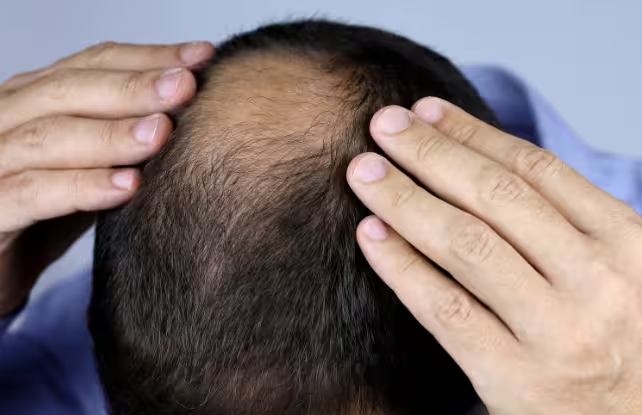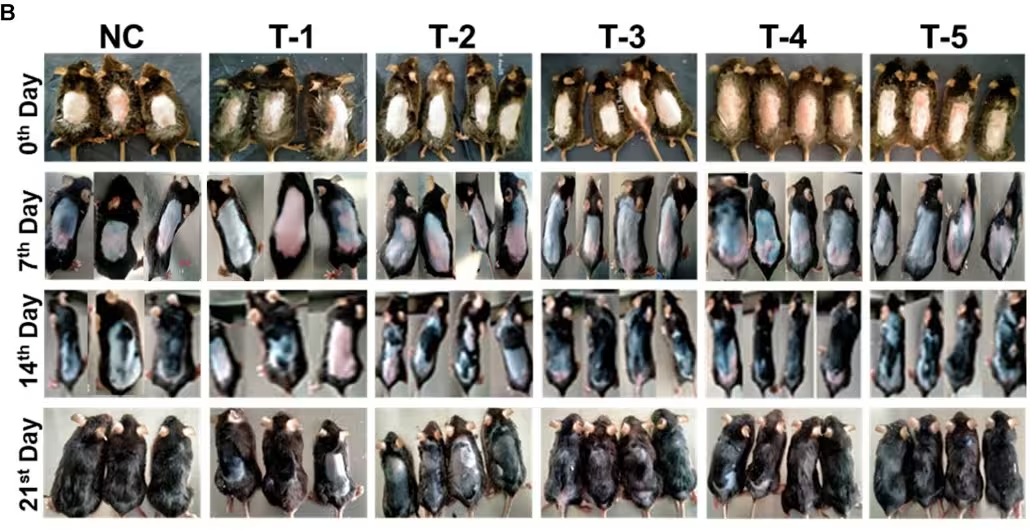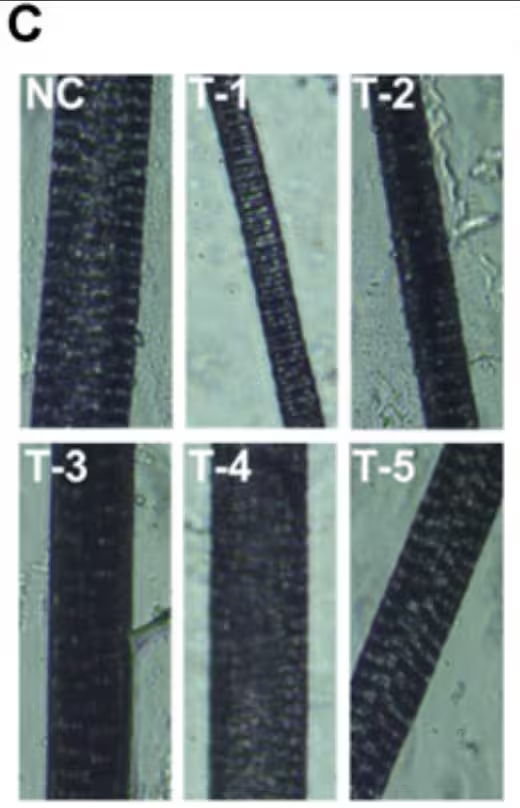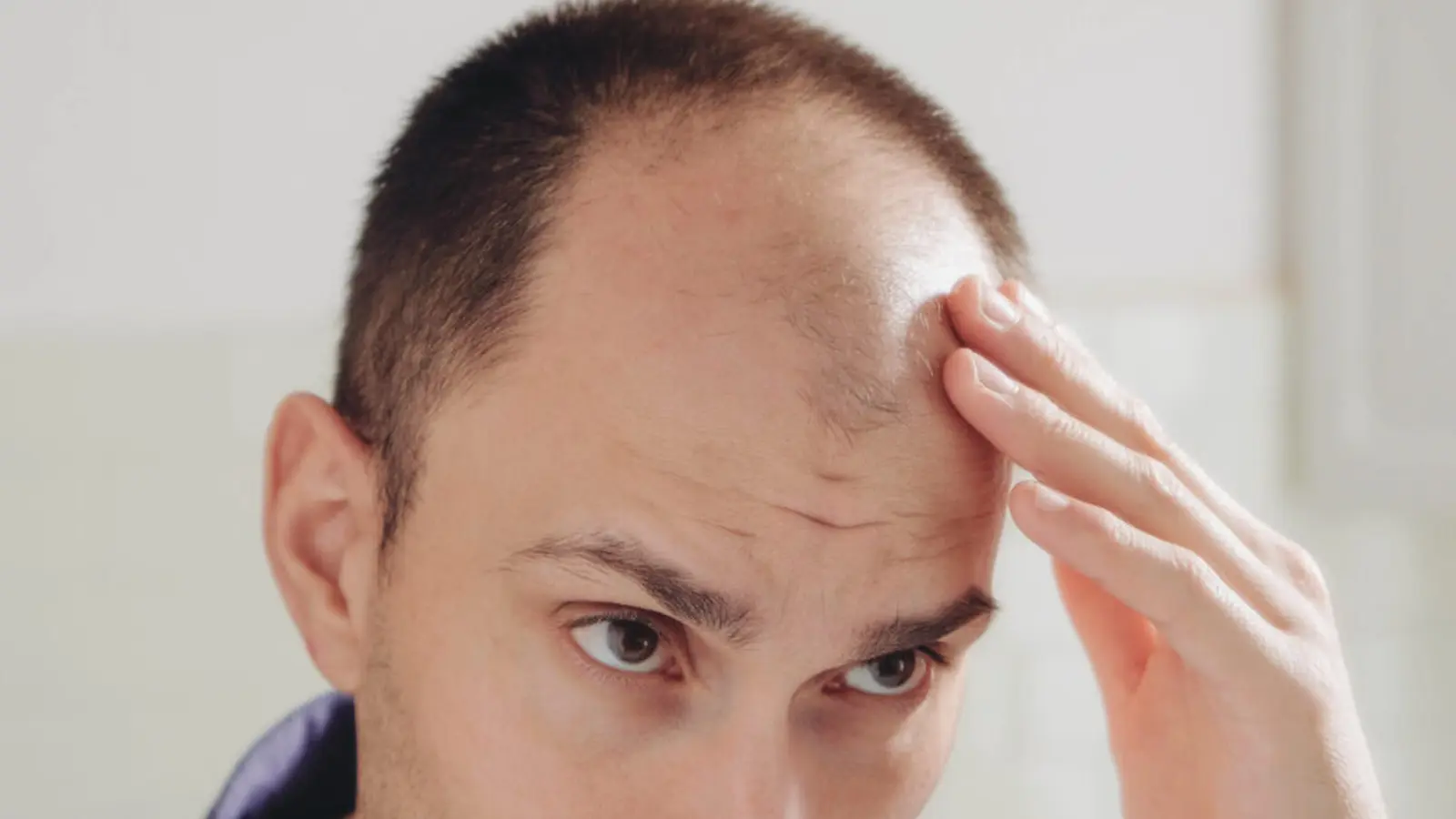6 Minutes
New lab findings: a simple sugar gel restores hair in mice
In 2024, researchers reported an unexpected discovery: a topical gel based on deoxyribose — the naturally occurring sugar component of DNA — produced substantial hair regrowth in mouse models of hereditary, testosterone-driven baldness. The finding, published in Frontiers in Pharmacology, suggests a low-cost, biodegradable approach that could complement or rival existing treatments such as minoxidil.

Hereditary-patterned baldness presents differently in men and women. (Oleg Elkov/Canva)
Scientific background and rationale
Androgenetic alopecia (hereditary-patterned baldness) is the most common form of hair loss worldwide, driven by a combination of genetics, hormones and age. Approved pharmacologic options remain limited: topical minoxidil and the oral 5-alpha-reductase inhibitor finasteride (for men). Both can be effective but are not universally successful and can carry side effects.
Deoxyribose is a five-carbon sugar integral to deoxyribonucleic acid (DNA). While probing how certain sugars affect wound healing, teams at the University of Sheffield and COMSATS University in Pakistan noticed that the fur around deoxyribose-treated lesions regrew faster than in untreated control animals. That incidental observation prompted a targeted study to test whether topical deoxyribose could stimulate hair follicle activity in models of male-pattern baldness.
Experiment design and methods
The researchers used male mice with testosterone-driven hair loss. After shaving the dorsal skin, they applied a biodegradable, non-toxic gel containing deoxyribose daily to the exposed area. Parallel groups received either a control gel, topical minoxidil, or a combination of deoxyribose gel plus minoxidil. The trial ran for roughly 20 days, with photographic documentation at multiple time points.

Photographs were taken at various stages throughout the 20-day trial, and the effect is clear.
Photographs of mice with male pattern baldness at different time intervals, including mice without any treatment (NC), mouse models of male pattern baldness (T-1), gel without medicine (T-2), gel with deoxyribose sugars (T-3), minoxidil (T-4), deoxyribose sugar and minoxidil gel (T-5). (Anjum et al., Front. Pharmacol., 2024).
Key results: robust regrowth and vascular changes
Within weeks, the deoxyribose-treated skin displayed robust regrowth: long, thick individual hairs reappeared across the treated areas. Quantitatively, both the deoxyribose gel and topical minoxidil prompted approximately 80–90% hair regrowth in the mouse model. Combining both therapies did not substantially increase regrowth above either treatment alone.
The authors observed that skin around deoxyribose-treated sites showed an increase in blood vessel density and skin cell activity. The team hypothesized that improved microvascular supply to the hair bulb enlarges follicle diameter and supports stronger hair shaft formation.

Photographs of hair shafts from different treatment groups. (Anjum et al., Front. Pharmacol., 2024).
Comparative efficacy
In this preclinical comparison, the deoxyribose gel matched minoxidil in effectiveness. That equivalence is notable because deoxyribose is a natural sugar, and the formulation used was biodegradable and described as non-toxic in the animal study.
Implications, limitations, and next steps
If the deoxyribose gel translates to humans, potential uses include treating androgenetic alopecia and stimulating hair, lash, or eyebrow regrowth after chemotherapy. However, these results are early-stage and limited to male mice with testosterone-driven alopecia; female-pattern hair loss and other causes of hair loss were not tested.
Safety, optimal dosing, long-term efficacy, and mechanisms require further investigation. The molecule appears to act in part by improving local blood flow and skin cell responses, but precise molecular pathways remain to be defined.
Sheila MacNeil, a tissue engineer at the University of Sheffield and a coauthor of the paper, commented that the findings are promising and "warrant further investigation." Lead author Muhammad Anjum (COMSATS) and collaborators emphasize the need for controlled clinical trials to determine whether the gel can safely and effectively treat human hair loss.
Related clinical considerations include regulatory approval pathways (for example, FDA review), potential interactions with existing topical or systemic hair-loss medications, and the necessity of continuous application, as some hair-loss therapies require ongoing use to maintain benefits.
Expert Insight
Dr. Laura Benson, a clinical dermatologist and hair research consultant, notes: 'These preclinical results are encouraging because they identify a simple, biologically plausible mechanism — improved microvascular support — that can be targeted topically. But animal efficacy does not guarantee human success. Well-designed phase 1–2 trials will be essential to assess safety, dosing and whether results persist after treatment stops.'
Conclusion
The discovery that topical deoxyribose promotes robust hair regrowth in a mouse model of androgenetic alopecia opens a promising research avenue. The sugar-based gel matched minoxidil in efficacy in these experiments and stimulated vascular and skin-cell responses around hair follicles. Further studies — including female models, mechanistic work and human trials — will determine whether this naturally derived treatment can expand the limited therapeutic toolkit for hair loss.
The research was published in Frontiers in Pharmacology in June 2024 by teams at the University of Sheffield and COMSATS University, Pakistan. The authors characterize the field as 'badly under-researched' and advocate for new therapeutic approaches.
Source: sciencealert


Leave a Comment